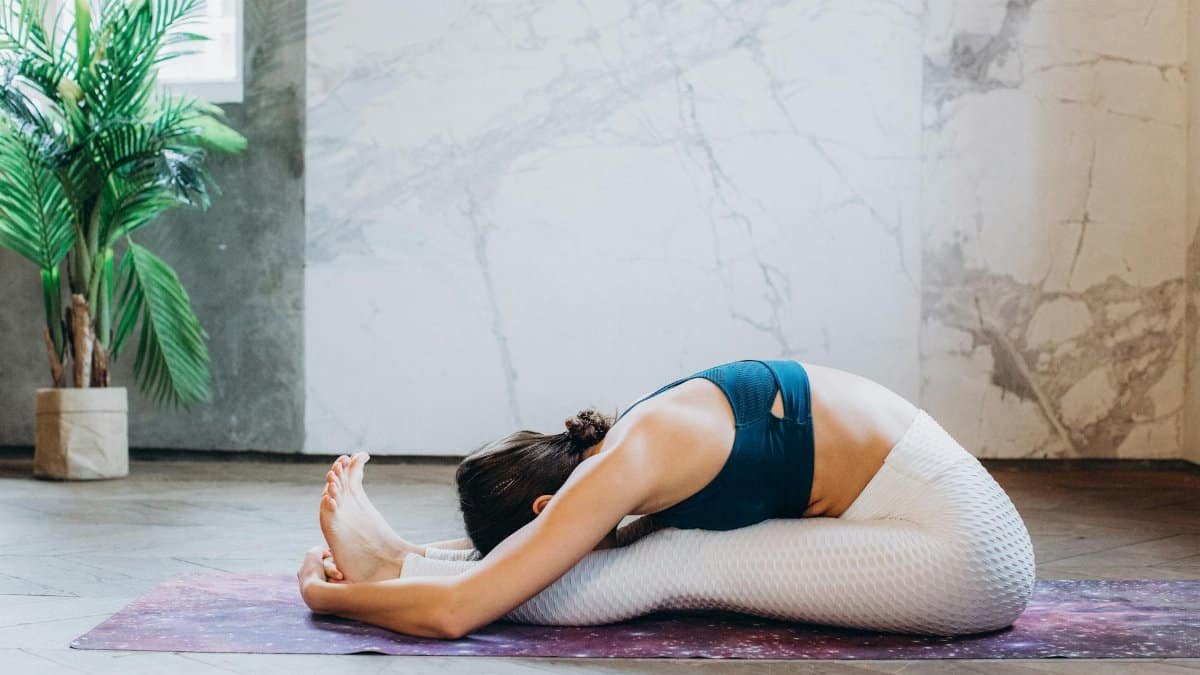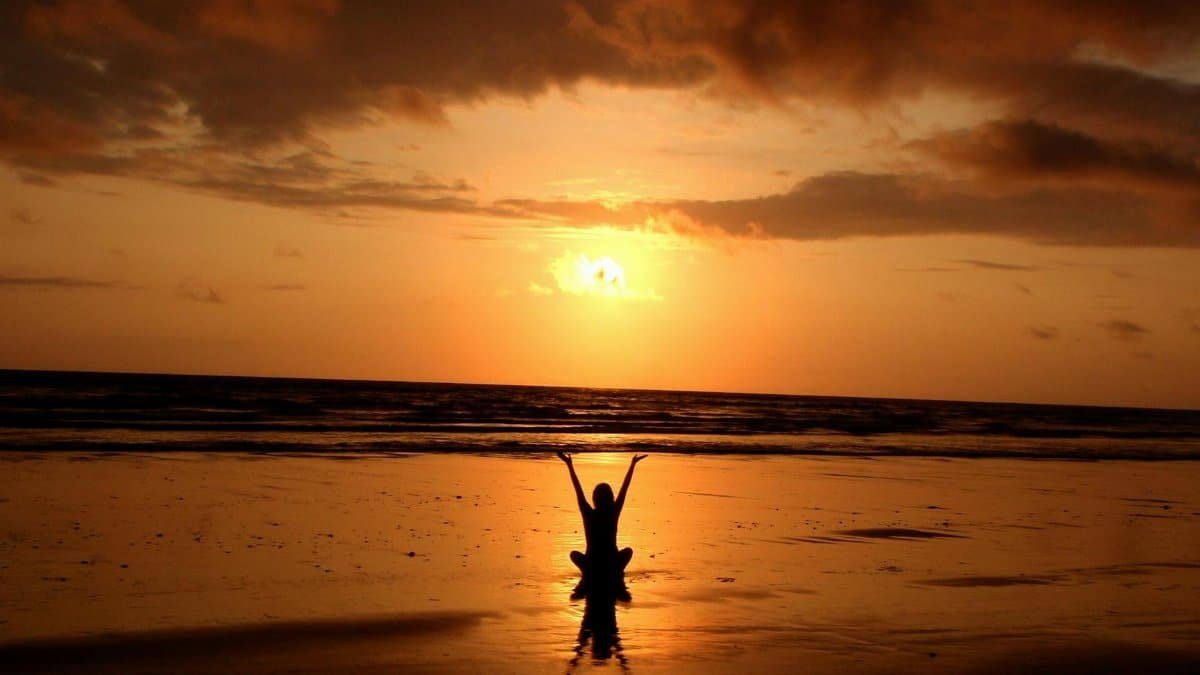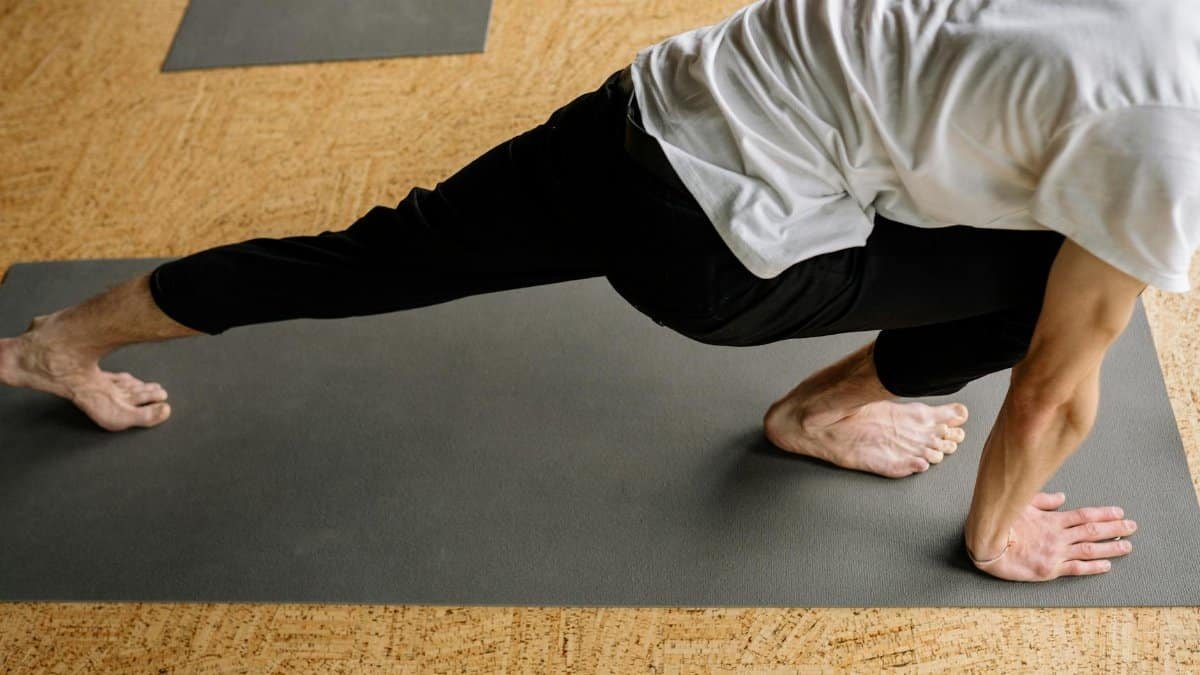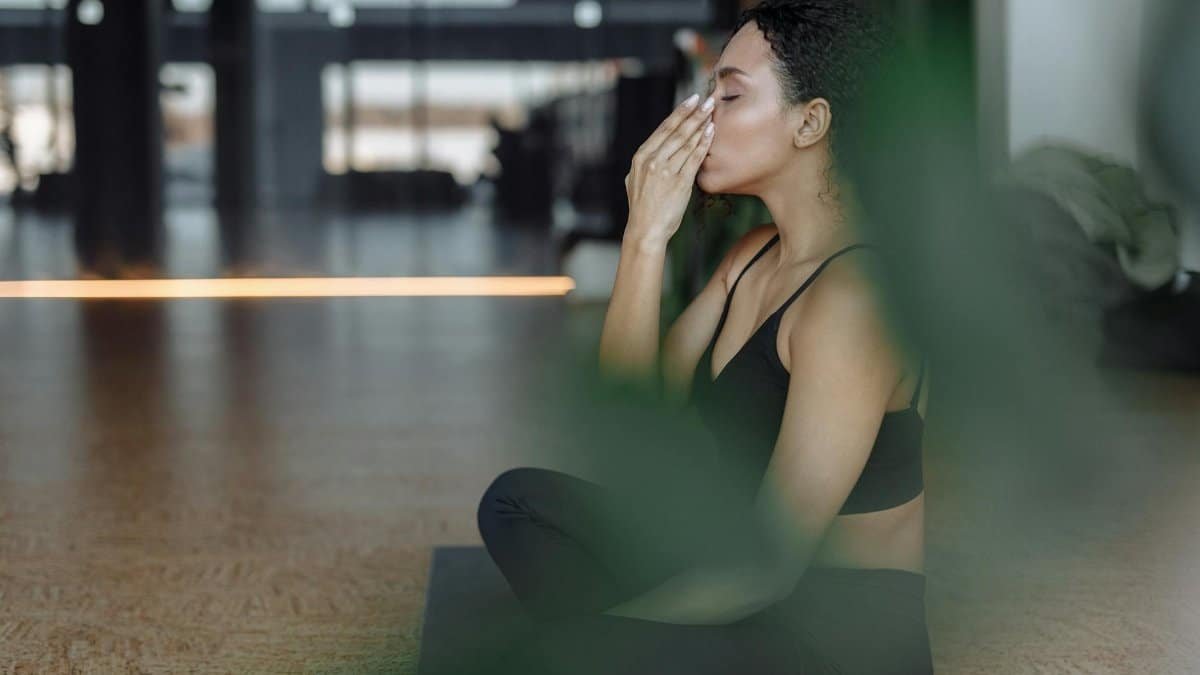In bustling cities like New York or Los Angeles, it’s hard to miss the growing wave of people unrolling mats in parks or studios. Yoga has surged in popularity, with classes popping up everywhere. This trend reflects a deeper search for calm amid daily chaos. Americans are turning to yoga poses not just for fitness, but for mental respite. A report from the Yoga Alliance shows participation has climbed steadily, especially post-pandemic. These simple postures offer a way to quiet the mind. They promise inner peace without needing fancy equipment. As we navigate 2025’s fast pace, exploring specific yoga poses can reveal practical paths to serenity. One in particular, the third on our list, stands out for sparking profound calm.
1. Child’s Pose: A Gentle Surrender

Start with something basic. Child’s Pose, or Balasana, invites you to fold forward and rest your forehead on the mat. Knees wide, big toes touching, arms extended or relaxed by your sides. It’s like curling into a protective shell. This pose eases tension in the back and shoulders. Many find it soothes anxiety almost instantly.
Picture a busy parent after a long day. They drop to the floor, sinking into this shape. Breathing deepens. The world fades. Studies back this up. Research from the National Institutes of Health highlights how such restorative poses reduce stress hormones.NIH on Yoga Benefits explains the science behind it. In one session, cortisol levels drop, paving the way for peace.
But it’s not always easy. Beginners might feel stiffness in the hips. That’s okay. Modify with a blanket under the knees. Over time, this pose builds a habit of letting go. It’s a reminder that surrender isn’t weakness. In our achievement-driven culture, that’s revolutionary. One anonymous account shared online described it as “the moment I finally exhaled the day’s weight.” Such stories show its real impact.
Practice it daily. Hold for five breaths. Feel the ground support you. This foundation sets the tone for deeper exploration.
2. Seated Forward Bend: Releasing the Past

Moving on, consider the Seated Forward Bend, known as Paschimottanasana. Sit with legs extended, then hinge at the hips to fold over them. Reach for your feet or shins. Don’t force it. The key is the forward fold, which calms the nervous system.
Why does this work? It stimulates the parasympathetic response, that rest-and-digest mode. A study published in the Journal of Alternative and Complementary Medicine found forward bends lower heart rate variability, signaling relaxation. Dive into the details via Journal of Alternative and Complementary Medicine Study. Participants reported feeling more centered after just a few minutes.
Imagine a office worker hunched over a desk all day. They try this pose at home. As they fold, tightness in the hamstrings eases. Memories of stressful meetings dissolve. It’s not magic, but it feels close. Yet, challenges arise. Tight muscles can make it uncomfortable. Use a strap around the feet to bridge the gap. This adaptation keeps it accessible.
The pose teaches patience. In 2025, with constant notifications buzzing, that lesson resonates. It encourages releasing what no longer serves. Pair it with mindful breathing. Inhale to lengthen the spine, exhale to deepen the fold. Over weeks, inner peace builds layer by layer.
Transitions like this from one pose to the next create a flow. They mirror life’s rhythms, offering tools for equilibrium.
3. Legs-Up-The-Wall Pose: Igniting Deep Calm

Here’s where things get transformative. Legs-Up-The-Wall, or Viparita Karani, is deceptively simple. Lie on your back, scoot your hips to a wall, and extend legs upward. Arms relax by your sides. Close your eyes. Gravity does the work, inverting blood flow gently.
This pose ignites deep calm like few others. It reverses the effects of standing all day, easing swollen legs and quieting the mind. Harvard Health Publishing notes how inversions like this promote relaxation by activating the vagus nerve. Check their insights at Harvard Health on Relaxation Response. Users often describe a wave of tranquility washing over them.
Think of someone battling insomnia. They slide into this position before bed. Minutes pass. Racing thoughts slow. Sleep comes easier. But it’s not without hurdles. Wall space might be limited in small apartments. A folded blanket under the hips helps. Or do it without the wall, legs elevated on a chair.
In a twist, this pose also boosts circulation, which indirectly supports mental clarity. Amid 2025’s wellness trends, it’s gaining traction in corporate settings. Some offices even designate quiet corners for quick sessions. One person recounted publicly feeling “a spark of profound stillness, like igniting an inner flame of peace.” That sentiment captures its essence.
Hold for 5 to 15 minutes. Focus on the breath. Let calm deepen. This third pose truly stands out, bridging physical relief with emotional depth.
From here, the journey continues. Each posture layers onto the last, building a personal sanctuary.
4. Corpse Pose: The Ultimate Stillness

Don’t underestimate the power of doing nothing. Corpse Pose, Savasana, involves lying flat on your back, limbs spread comfortably, palms up. Eyes closed. It’s the finale of many yoga classes, but potent on its own.
This stillness allows integration. The body absorbs the benefits of prior movements. A review from the Mayo Clinic emphasizes how such relaxation techniques combat chronic stress. Explore more at Mayo Clinic on Yoga. Brain scans show decreased activity in stress centers during Savasana.
Envision a veteran yogi guiding a newcomer. “Just lie there,” they say. At first, the mind wanders. Then, a subtle shift. Peace settles in. However, distractions can intrude—itchy spots or noisy thoughts. Acknowledge them without judgment. That’s the practice.
In our productivity-obsessed era, Savasana rebels against busyness. It whispers that rest is productive. Incorporate it after work. Even 10 minutes resets the day. As yoga poses gain mainstream appeal in 2025, this one reminds us simplicity reigns.
5. Easy Pose: Grounded Meditation

Finally, circle back to basics with Easy Pose, Sukhasana. Sit cross-legged, spine tall, hands on knees. It’s a foundation for meditation, fostering inner peace through presence.
This seated posture aligns the body for breath work. It opens the hips gently while stabilizing the base. Research from the University of California supports how seated poses enhance mindfulness. Their findings are available at UC Berkeley Greater Good Science Center. Practitioners often experience reduced rumination.
Consider a student overwhelmed by exams. They sit in Easy Pose, focusing on inhales and exhales. Clarity emerges. Tensions melt. Yet, for those with knee issues, props like cushions elevate the hips, making it sustainable.
The beauty lies in its versatility. Add a mantra or visualization. In group settings, it builds community. Online forums buzz with stories of transformation: one user noted, “It grounded me during chaos, turning turmoil into tranquility.”
As we wrap up, these five yoga poses form a toolkit for inner peace. They adapt to any lifestyle. Start small. Consistency unlocks their full potential. In a world craving calm, they’re a timeless remedy.
